
Babylonian Empire
Babylonia was an ancient state that was centered around the city of Babylon in what is now central-southern Mesopotamia (including modern Iraq and parts of Kuwait, Syria, and Iran). Founded around 1894 BC, it was an Akkadian-speaking state initially populated by Akkadians but governed by Amorites.
Under Hammurabi's rule and thereafter, it was nostalgically referred to as "the country of Akkad," echoing the former splendor of the Akkadian Empire. Babylonia frequently competed with its older, ethnolinguistically similar neighbor Assyria to the north and Elam to the east in what is now Iran.
After Hammurabi's reign (approximately 1792-1752 BC in the middle chronology, or 1696-1654 BC in the short chronology), Babylonia briefly ascended as a major power, following the Akkadian Empire, the Third Dynasty of Ur, and the Old Assyrian Empire. However, it quickly disintegrated into a smaller kingdom centered around Babylon after Hammurabi's death.
Similarly to Assyria, Babylonia maintained Akkadian, the language of its native people, for official purposes, even though its Amorite rulers and Kassite successors, who were not native to the region and spoke a language isolate, took over. It continued to use the Sumerian language for religious purposes, a practice also observed in Assyria, which shared the same religious traditions as Babylonia. By the time Babylon was established, Sumerian was no longer spoken, having been completely absorbed by Akkadian. The rich Akkadian and Sumerian heritages greatly influenced the subsequent Babylonian and Assyrian cultures, ensuring the area remained a significant cultural hub, even during extended periods of foreign domination.
Pre-Babylonian Period
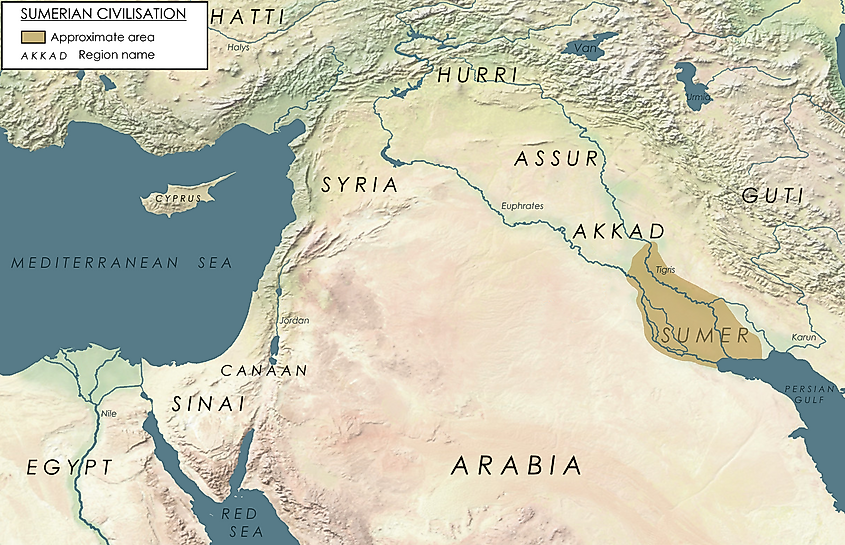
Mesopotamia's rich history began with the Sumerian civilization around 5400 BC and the emergence of Akkadian speakers by the 30th century BC, who later established Akkad, Assyria, and Babylonia. The third millennium BC saw a deep cultural integration between Sumerians and Akkadians, marked by extensive bilingualism and mutual linguistic influences, forming a sprachbund. Akkadian gradually became the dominant language, overtaking Sumerian around the turn of the 3rd to 2nd millennium BC.
The region was initially dominated by Sumerian cities until the Akkadian Empire (2334-2154 BC) unified the Semites and Sumerians under one rule. However, the empire collapsed due to various internal and external pressures, leading to a resurgence of Sumerian control under the Third Dynasty of Ur until the rise of Amorite kingdoms after the fall of the Ur-III dynasty. These dynamics set the stage for subsequent political changes in Mesopotamia, including the eventual dominance of Babylon.
The First Babylonian Empire
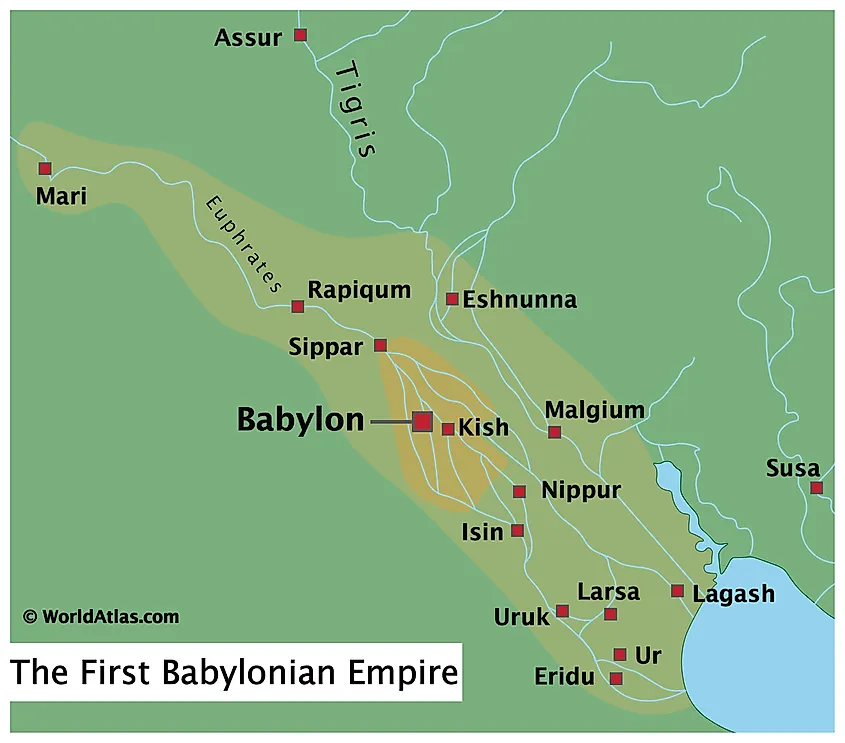
In around 1900 BCE, the Amorites, a western Semitic people, conquered Mesopotamia. At around this time, Babylon began to emerge as an important commercial center for the region. Initially a small city-state, Babylon began expanding its territory in the mid-19th century BCE. But it was during the rule of the Babylonian king Hammurabi that Babylon became an empire. Hammurabi was the 6th king of the 1st Babylonian Dynasty. He ruled from around 1792 BCE to 1750 BCE. During his reign, the Babylonian Empire controlled southern Mesopotamia and part of Assyria to the north.
The Code of Hammurabi
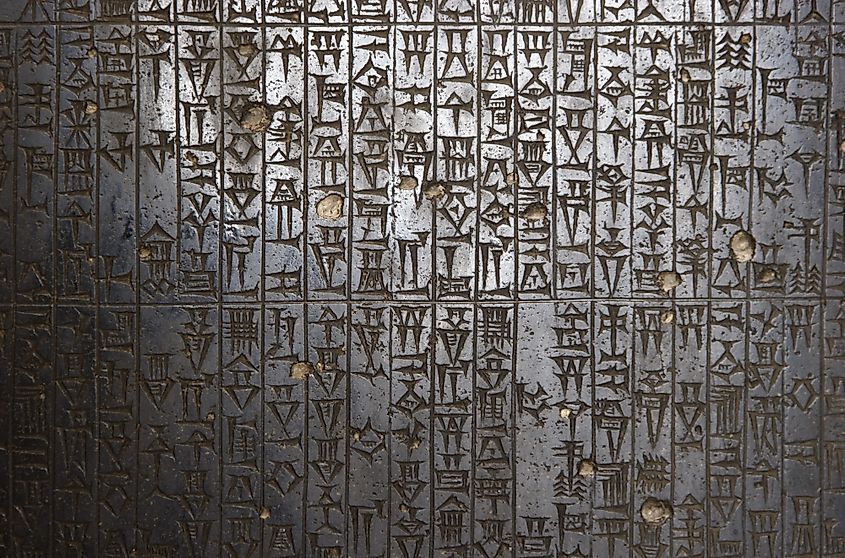
Hammurabi not only built an empire. He also developed one of the world's earliest complete legal codes, aptly named the Code of Hammurabi. The Code of Hammurabi was quite comprehensive. It consisted of 282 rules on matters ranging from family law to commercial activity. These rules included set punishments for certain transgressions. The Code of Hammurabi was the originator of the "eye for an eye" concept of justice, like the laws mentioned in the Old Testament. The ancient legal code prescribed the death penalty and amputation in many cases.
The code also laid out the nature of the relationship between Hammurabi, the gods that the Babylonians worshipped, and the people that the Babylonian emperor ruled over. Not everyone was equal before the law. The Code of Hammurabi set different standards of justice for the three classes of Babylonian society: the propertied class, freedmen, and slaves. For example, if a doctor killed a rich patient, his hands would be cut off. But if the person he killed were a slave, he would only have to make financial restitution.
The Code of Hammurabi was written in cuneiform on a black stone stele carved from a single four-ton slab of diorite. On top of the stele is a carving of Hammurabi receiving the law from Shamash, the Babylonian God of justice. The code itself appears below this relief. A French archeological expedition in 1901 rediscovered the stele. It was taken to the Louvre Museum in Paris, where it remains to this day.
Fall of the First Babylonian Empire
The first Babylonian Empire began to decline after Hammurabi's death. Towards the latter part of the 18th century BCE, the empire lost a large amount of its southern territory facing the Persian Gulf, where the ancient cities of Ur and Uruk were located. By the end of the 18th century, Assyria had freed itself from the Babylonians. Finally, in 1595 BCE, the Hittites, under Mursil I, conquered Babylon and unseated the Babylonian king, Samsuditana, bringing an end to Hammurabi's dynasty.
The Second Babylonian (Neo-Babylonian) Empire
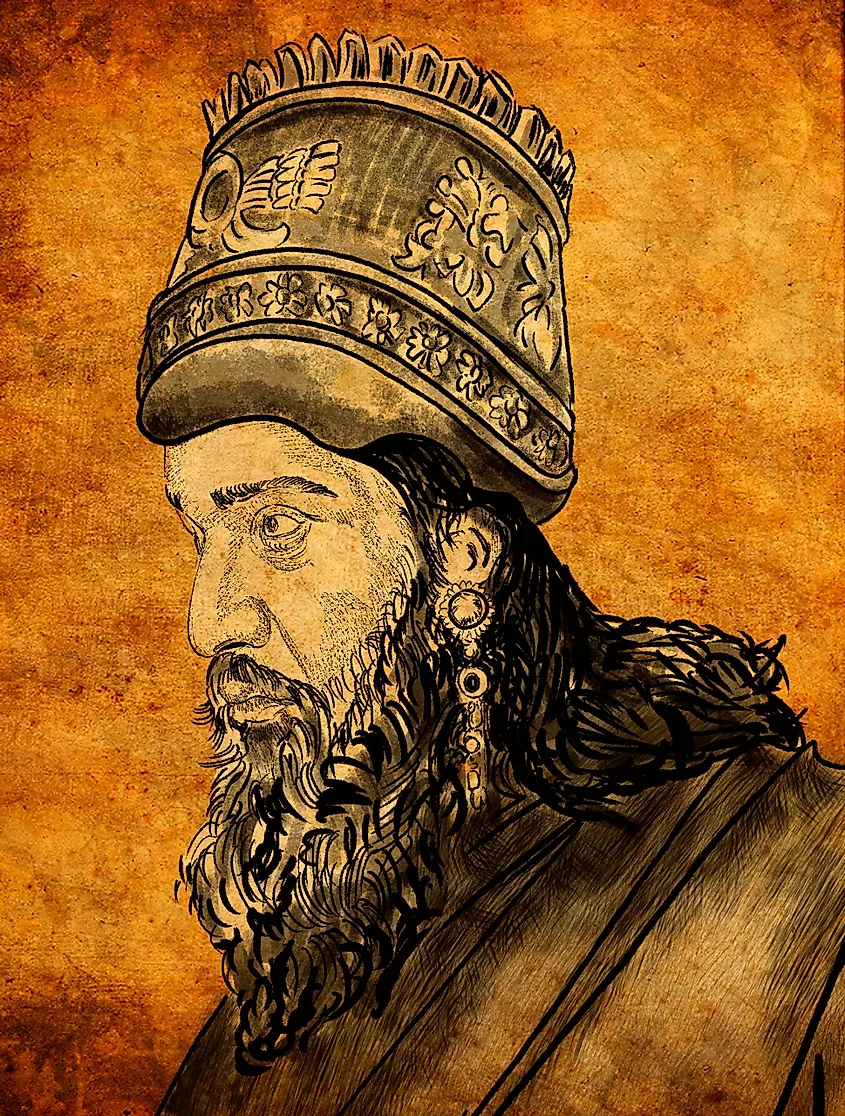
The second Babylonian Empire, otherwise known as the Neo-Babylonian Empire or the Chaldean Babylonian Empire, began in the 7th century BCE when a Chaldean leader named Nabopolassar took over the city. He conquered Assyria, which had ruled Babylon for over a century. In 612 BCE, he captured the Assyrian capital, Nineveh. Nabopolassar's son, Nebuchadnezzar II, would become the greatest ruler in Babylonian history. During his rule from 605 BCE to 562 BCE, the Babylonian Empire would reach the peak of its power.
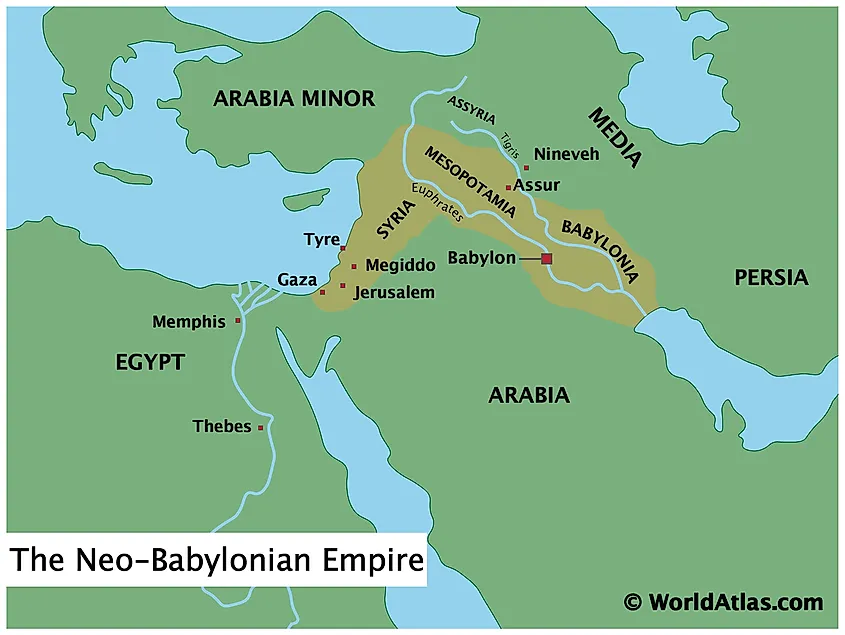
The empire stretched from the Persian Gulf in the east to the borders of Egypt in the west. Nebuchadnezzar II conquered the kingdom of Judea and its capital, Jerusalem, in 587 BCE, destroying the 1st Jewish Temple therein and exiling many Jews to Babylon. At the same time, he revitalized Babylon itself. Among other grand buildings, Nebuchadnezzar II built at least three major palaces. He also built the Ishtar Gate and the shrine of Esagil. The glorious empire that Nebuchadnezzar II built, however, did not last long.
Fall of the Neo-Babylonian Empire
In 549 BC, Cyrus the Great, the Achaemenid king of Persia, overthrew the Median king Astyages at Ecbatana, marking the end of the Median Empire and the rise of the Achaemenid Empire. Cyrus then united various Iranian peoples along with the pre-Iranian Elamites and Gutians under his rule.
A decade later, Cyrus conquered Babylon. He decisively defeated the Babylonian army led by Belshazzar at the Battle of Opis. Following this victory, Cyrus's forces entered Babylon effortlessly on October 12, after diverting the Euphrates River. Nabonidus surrendered and was exiled, and Cyrus secured his position by placing guards at Marduk’s temple, maintaining religious continuity. Cyrus portrayed himself as the legitimate heir to the Babylonian throne and as Marduk’s avenger against Nabonidus's alleged sacrilege. Welcomed as a liberator by the Babylonians, Cyrus facilitated the return of exiled groups like the Jews, granting them freedom to restore their religious practices through decrees such as the Cyrus Cylinder. This policy helped legitimize his rule, and under his leadership, Babylon ceased to be an independent state.
Aftermath and Legacy
Babylon thrived under various foreign rulers, maintaining its cultural and economic significance throughout different empires. Initially, the Achaemenid rulers treated Babylonia with high regard, viewing it as a distinct entity in a personal union with their kingdom, contributing significantly to the empire's economy. However, despite the respect from rulers, Babylonia experienced resentment and multiple revolts aimed at restoring native rule, with at least five rebels declaring themselves King of Babylon during Achaemenid oversight.
The most severe punishment came after the revolt led by Shamash-eriba against Xerxes I, which likely resulted in the destruction of Babylon’s fortifications and temples. Xerxes possibly removed the sacred statue of Marduk, further dividing the large Babylonian satrapy into smaller units to weaken its influence. Despite these tumultuous periods, Babylonian culture persisted under the later Hellenic, Macedonian, and Seleucid rule, with these rulers also recognized as kings of Babylon. However, the advent of Parthian rule marked the gradual decline of Babylon as a major urban center, with a diminishing Akkadian-speaking population and underfunded temples. The old Babylonian culture saw its end around 230 AD with religious reforms under the Sasanian Empire, leading to the closure of ancient cult centers.











